Publications

Healthy, well-qualified and highly competent workers are essential for Angola to exploit the potential of its population and enjoy the Demographic Dividend (DD). The dividend demographic is the accelerated economic growth that can occur when a country invests to significantly reduce the high fertility rates, leading to a change in the age structure of the population, leaving a structure where there is a predominance of children dependent for one where there are more people of working age. However, the total economic potential of this age-old population can improve considerably if investments are made in the development of human capital.

Angola’s Long-Term Development Strategy, Vision 2025, aims to lift the country out of poverty by promoting growth economic, macro-economic stability, jobs and equality, taking advantage of the country’s considerable natural resources and its potential to create opportunities for all its citizens. Angola is currently classified as a low-middle income country, with a GDP per capita estimated at US $ 3,879. A growth rate impressive economic performance, averaging more than 10% annually between 2006 and 2010, it reduced to more than half (4.7%) between 2011 and 2015 as a result of the sudden and prolonged decline in oil prices oil, which represent more than 95% of the income from export from Angola. Despite being a middle-income country, Angola faces many socio-economic challenges that have placed it among the low human development countries (ranked 150th 188 countries in 2015).

Angola is a low-middle income country, with an estimated GDP per capita at $ 3,879, an impressive rate of economic growth, averaging more than 10% annually between 2006 and 2010, has reduced more half (4.7%) between 2011 and 2015 as a result of the sudden and international oil prices, which represent over 95% of Angola’s export earnings. The fast population growth has impeded economic growth. Angola has one of the highest fertility rates in Africa sub-Saharan Africa, with an average of 6.2 children per woman. This resulted in high ratio of dependent children, which compromises the perspective of the country to achieve its Vision 2025 objective – reduce poverty promoting economic growth, macroeconomic stability and jobs.
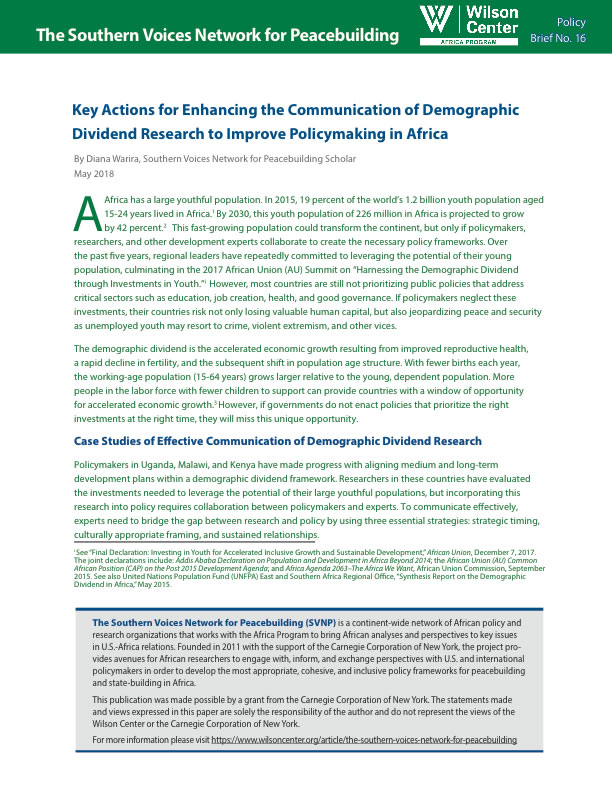
Policy-makers in Uganda, Malawi, and Kenya have made progress with aligning medium and long-term development plans within a demographic dividend framework. Researchers in these countries have evaluated the investments needed to leverage the potential of their large youthful populations, but incorporating this research into policy requires collaboration between policymakers and experts.
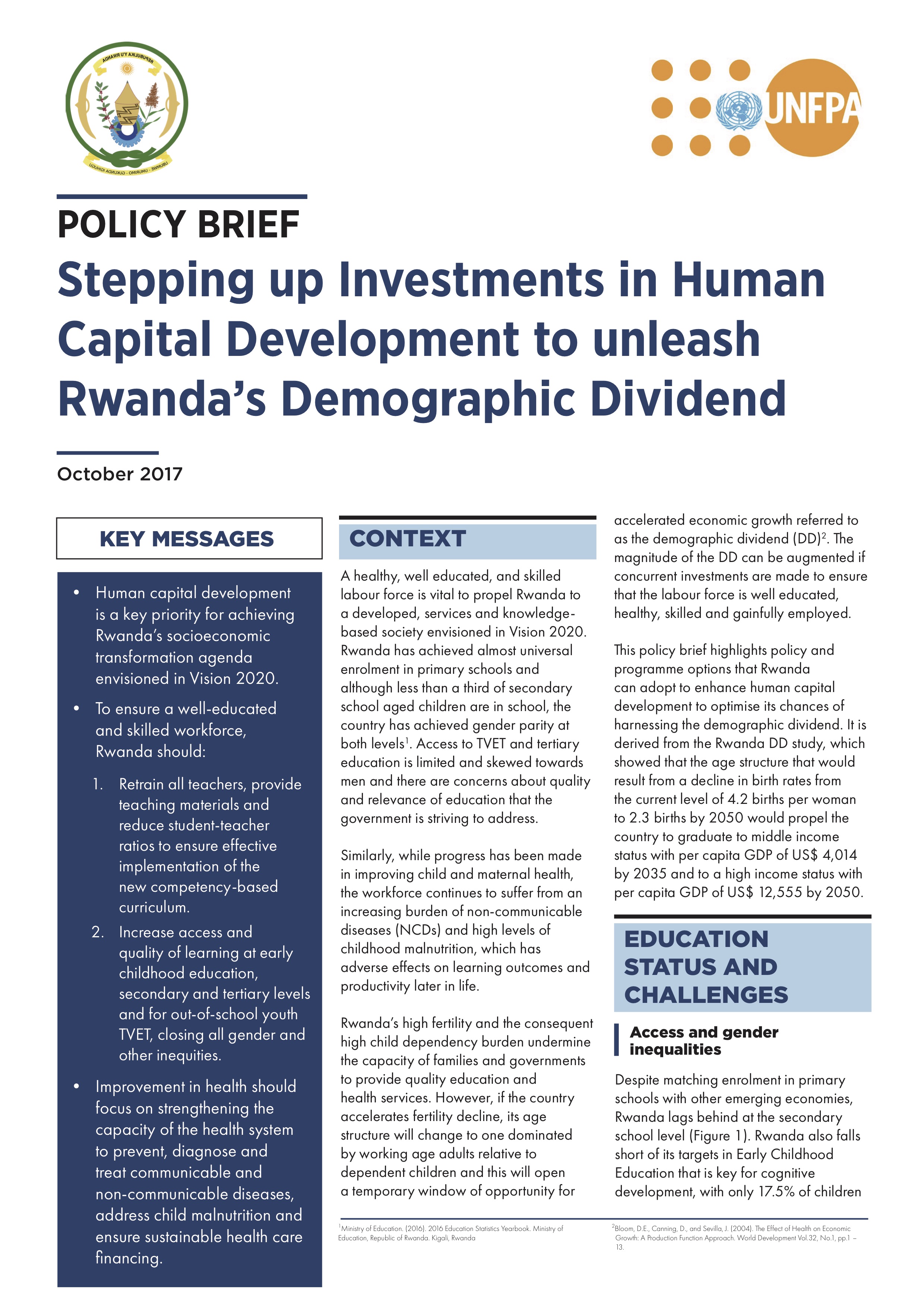
This policy brief highlights the policy and programme options that Rwanda can adopt to enhance human capital development to optimise its chances of harnessing the demographic dividend. It is derived from the Rwanda DD study, which showed that the age structure that would result from a decline in birth rates from the current level of 4.2 births per woman to 2.3 births by 2050 would propel the country to graduate to middle-income status with per capita GDP of US$ 4,014 by 2035 and to high-income status with per capita GDP of US$ 12,555 by 2050.
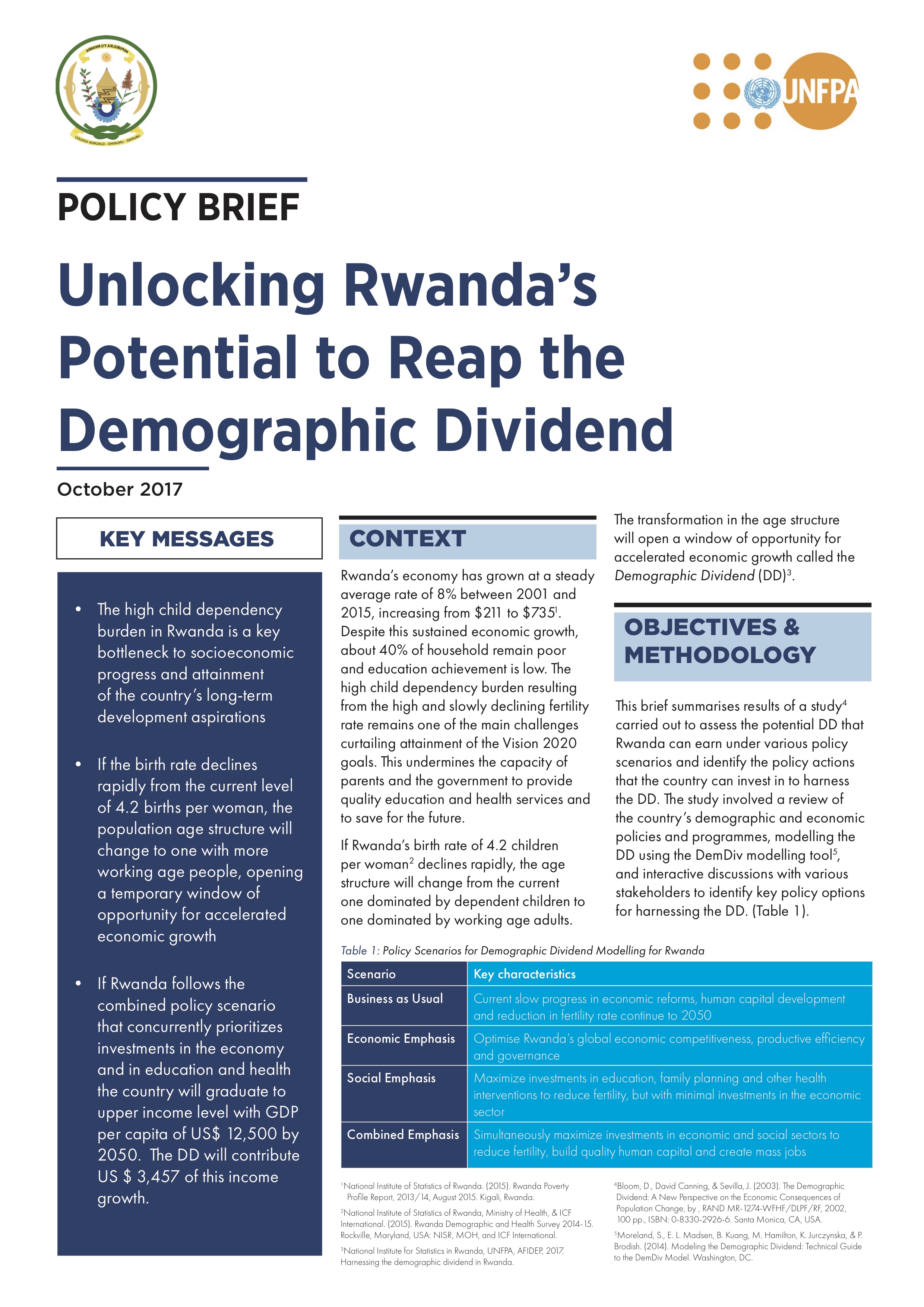
This brief summarises results of the study carried out to assess the potential demographic dividend (DD) that Rwanda can earn under various policy scenarios and identify the policy actions that the country can invest in to harness the DD. The study involved a review of the country’s demographic and economic policies and programmes, modelling the DD using the DemDiv modelling tool, and interactive discussions with various stakeholders to identify key policy options for harnessing the DD.
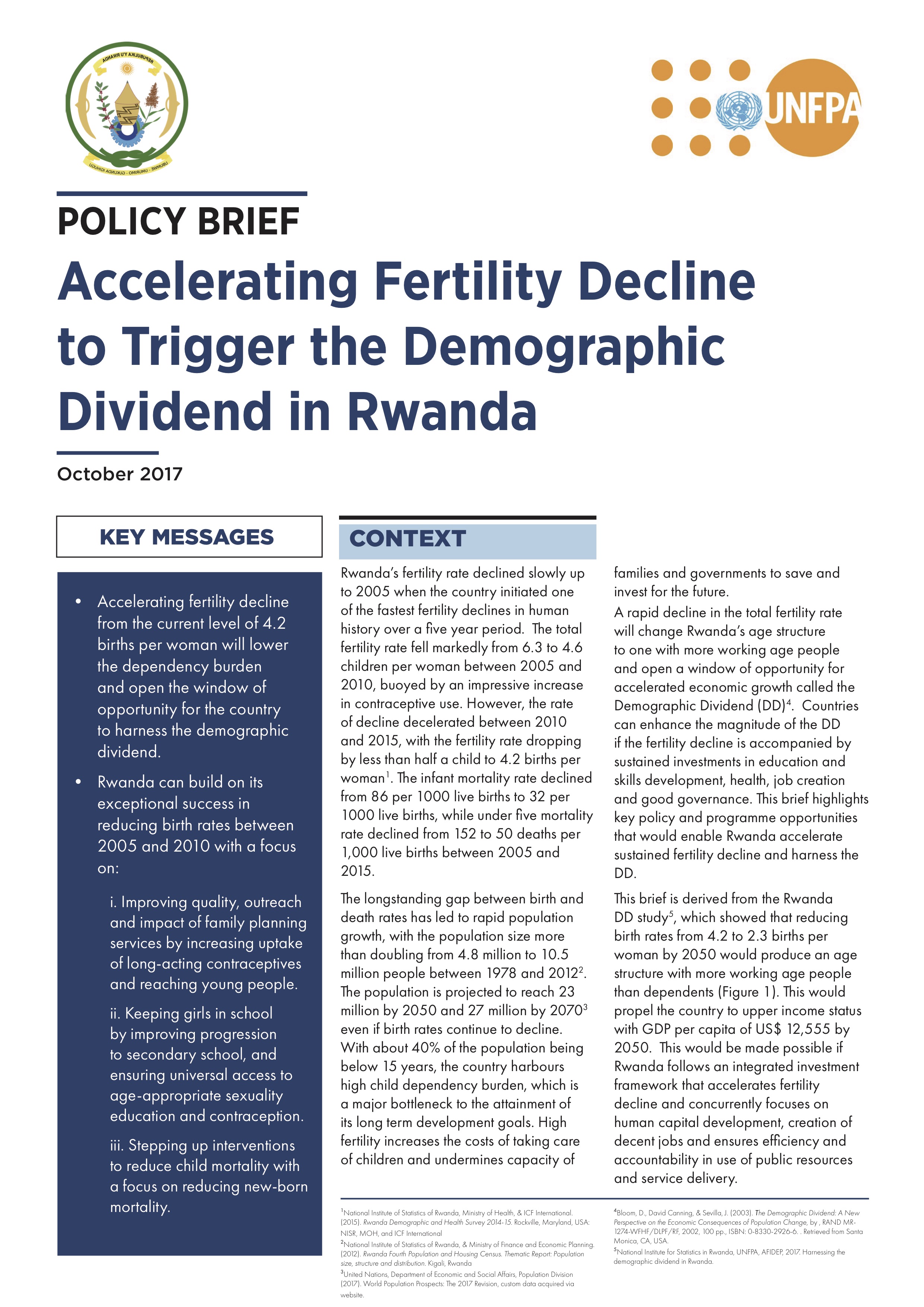
This brief is derived from the Rwanda Demographic Dividend (DD) study, which showed that reducing birth rates from 4.2 to 2.3 births per woman by 2050 would produce an age structure with more working age people than dependents. This would propel the country to upper-income status with GDP per capita of US$ 12,555 by 2050.
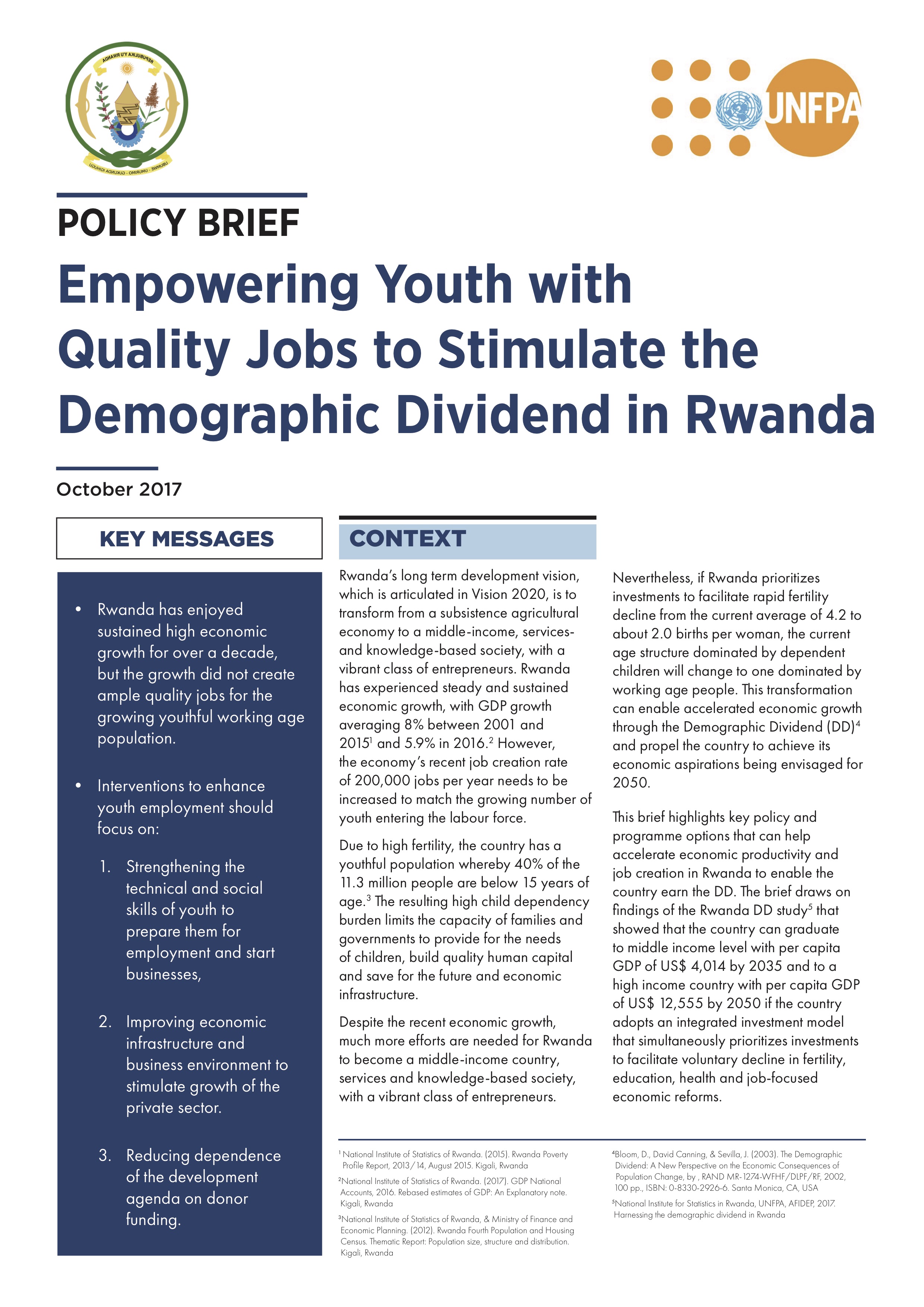
This brief highlights the key policy and programme options that can help accelerate economic productivity and job creation in Rwanda to enable the country earn the DD. The brief draws on findings of the Rwanda DD study that showed that the country can graduate to middle-income level with per capita GDP of US$ 4,014 by 2035 and to a high-income country with per capita GDP of US$ 12,555 by 2050 if the country adopts an integrated investment model that simultaneously prioritises investments to facilitate voluntary decline in fertility, education, health and job-focused economic reforms.
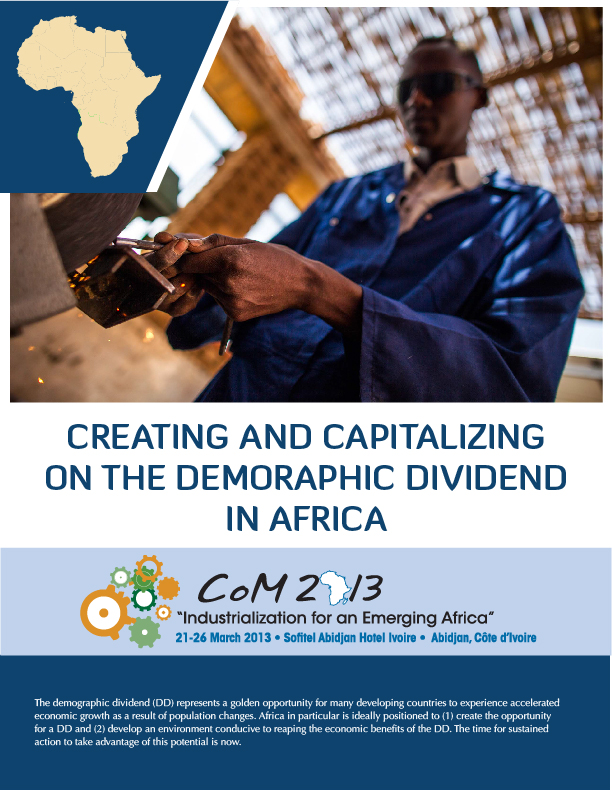
The demographic dividend (DD) represents a golden opportunity for many developing countries to experience accelerated economic growth as a result of population changes. Africa in particular is ideally positioned to (1) create the opportunity for a DD and (2) develop an environment conducive to reaping the economic benefits of the DD. The time for sustained action to take advantage of this potential is now.
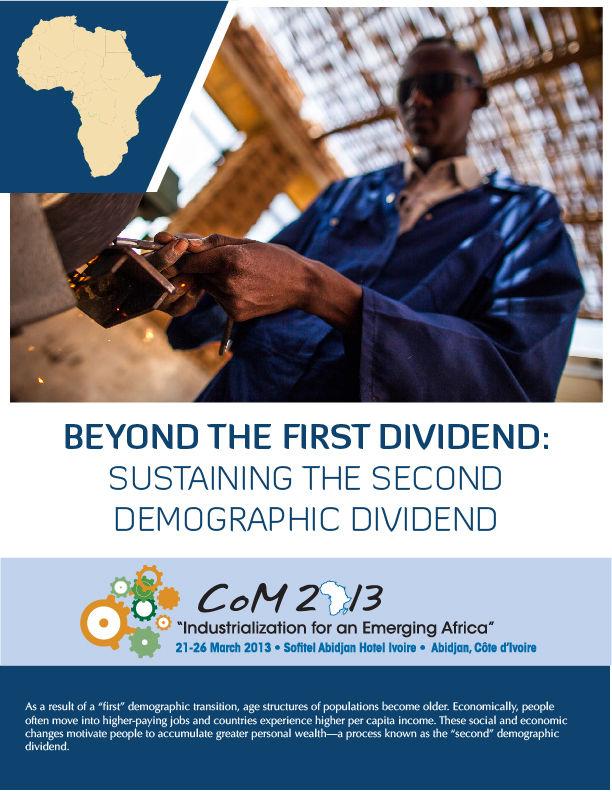
As a result of a “first” demographic transition, age structures of populations become older. Economically, people often move into higher-paying jobs and countries experience higher per capita income. These social and economic changes motivate people to accumulate greater personal wealth—a process known as the “second” demographic dividend.
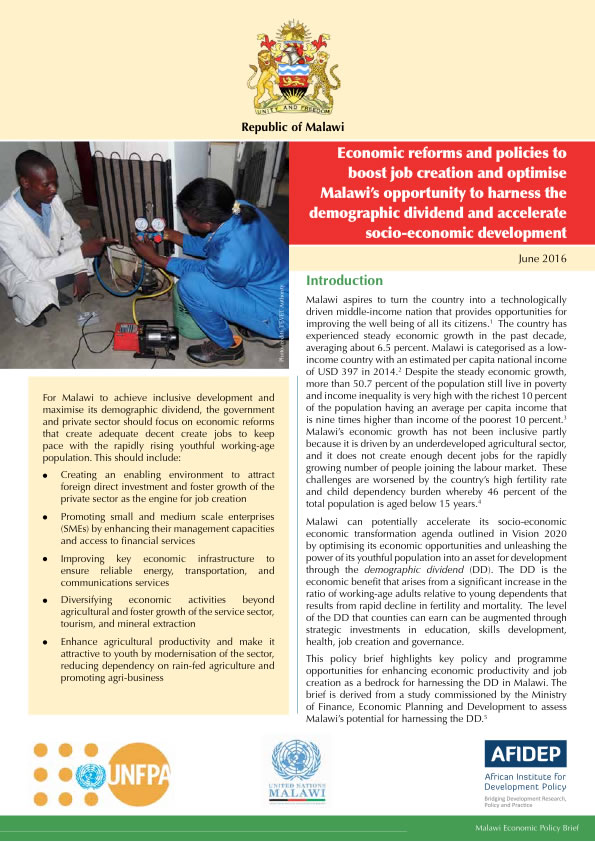
For Malawi to achieve inclusive development and maximise its demographic dividend, the government and private sector should focus on economic reforms that create adequate decent create jobs to keep pace with the rapidly rising youthful working-age population.
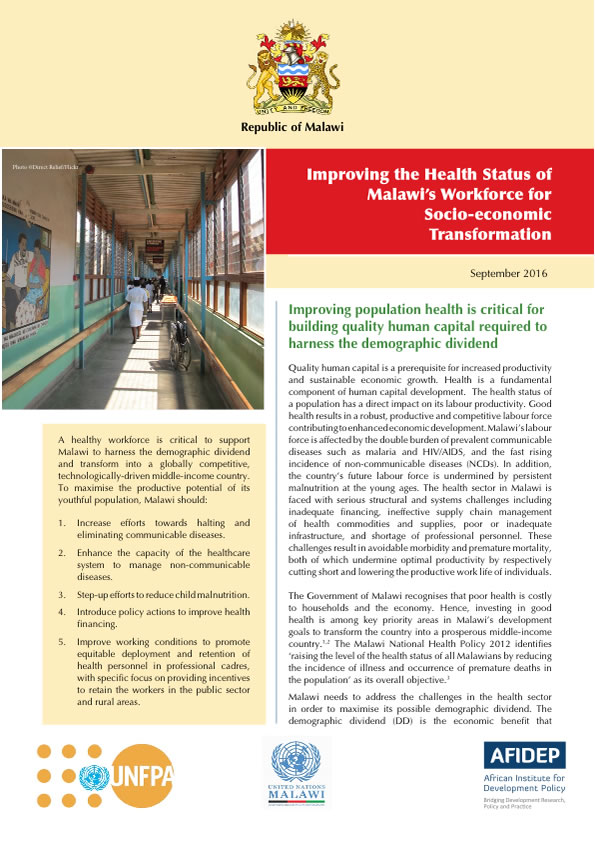
A healthy workforce is critical to support Malawi to harness the demographic dividend and transform into a globally competitive, technologically-driven middle-income country.

